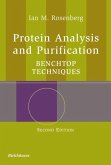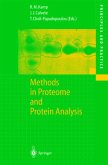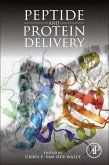Bergey’s Manual of Systematic Bacteriology, one of the most comprehensive and authoritative works in the field of prokaryotic systematics is undergoing an extensive revision that will ultimately culminate in a five volume Second Edition. Arrangement of the content of the Second Edition follows the now familiar and well regarded phylogeny of the 16S rRNA gene, yet retains much of the layout of the First Edition. Volume 1, encompassing the Archaea, Deeply Branching and Phototrophic Bacteria was published in 2001. We are pleased to announce that work on Volume 2, The Proteobacteria, has been completed. This culminates a four year effort by Bergey's Manual Trust and more than 150 internationally recognized authorities to provide a comprehensive view of the Proteobacteria, the largest prokaryotic phylum.
How one goes about analyzing proteins is a constantly evolving field that is no longer solely the domain of the protein biochemist. Investi gators from diverse disciplines find themselves with the unanticipated task of identifying and analyzing a protein and studying its physical properties and biochemical interactions. In most cases, the ultimate goal remains understanding the role(s) that the target protein is playing in cellular physiology. It was my intention that this manual would make the initial steps in the discovery process less time consuming and less intimidating. This book is not meant to be read from cover to cover. The expanded Table of Contents and the index should help locate what you are seeking. My aim was to provide practically oriented information that will assist the experimentalist in benchtop problem solving. The appendices are filled with diverse information gleaned from catalogs, handbooks, and manuals that are presented in a distilled fashion designed tosave trips to the library and calls to technical service representatives. The user is encouraged to expand on the tables and charts to fit individual experimental situations. This second edition pays homage to the computer explosion and the various genome projects that have revolutionized how benchtop scientific research is performed. Bioinformatics and In silica science are here to stay. However, the second edition still includes recipes for preparing buffers and methods for lysing cells.
How one goes about analyzing proteins is a constantly evolving field that is no longer solely the domain of the protein biochemist. Investi gators from diverse disciplines find themselves with the unanticipated task of identifying and analyzing a protein and studying its physical properties and biochemical interactions. In most cases, the ultimate goal remains understanding the role(s) that the target protein is playing in cellular physiology. It was my intention that this manual would make the initial steps in the discovery process less time consuming and less intimidating. This book is not meant to be read from cover to cover. The expanded Table of Contents and the index should help locate what you are seeking. My aim was to provide practically oriented information that will assist the experimentalist in benchtop problem solving. The appendices are filled with diverse information gleaned from catalogs, handbooks, and manuals that are presented in a distilled fashion designed tosave trips to the library and calls to technical service representatives. The user is encouraged to expand on the tables and charts to fit individual experimental situations. This second edition pays homage to the computer explosion and the various genome projects that have revolutionized how benchtop scientific research is performed. Bioinformatics and In silica science are here to stay. However, the second edition still includes recipes for preparing buffers and methods for lysing cells.








